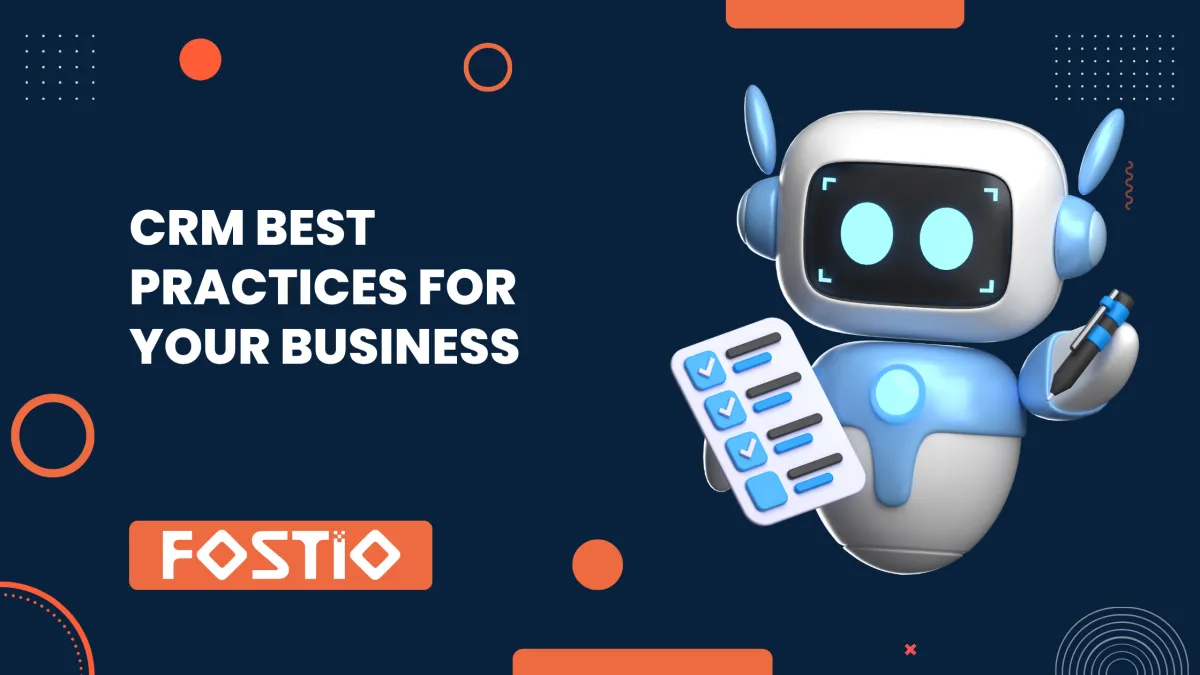
CRM Best Practices for Business Growth in 2025
Managing customer relationships can feel overwhelming if you’re juggling multiple apps, messy data, and siloed teams. That’s exactly where CRM best practices come in. By following a proven set of strategies, you can make your CRM system the engine that drives growth, boosts productivity, and helps you deliver better customer experiences.
In this guide, we’ll break down the 8 essential CRM best practices to help your business maximize value from your CRM. Whether you’re just getting started or optimizing your setup, these tips will keep your CRM strategy aligned with your business goals.
Why CRM Best Practices Matter
Today, businesses often use hundreds of apps but only a fraction of them actually integrate. That leaves teams frustrated and customers stuck with inconsistent experiences. A well-implemented CRM helps you:
Keep customer data in one place
Automate repetitive tasks
Improve collaboration between sales, service, and marketing
Deliver more personalized and timely customer interactions
In short, CRM best practices are not just “nice-to-haves” they’re essential for growth.
1. Choose a CRM That Fits Your Business
Your CRM isn’t just software; it’s the backbone of your customer strategy. When selecting a CRM:
Look for scalability (can it grow with you?).
Check integration capabilities with tools you already use.
Consider ease of customization to fit your workflows.
Review total cost of ownership (subscription, support, training).
CRM Comparison Snapshot
2. Set Clear CRM Goals Aligned to Business Outcomes
Your CRM should serve measurable goals, not just store contacts. Examples include:
Increase sales pipeline velocity by 20%
Reduce customer churn by 15%
Improve customer satisfaction score (CSAT) by 10%
Boost marketing campaign ROI
💡 Tip: Use SMART goals (Specific, Measurable, Achievable, Relevant, Time-bound). For example: “Reduce average response time from 2 hours to 30 minutes by Q3.”
3. Build a Solid Implementation Plan
A strong CRM implementation plan keeps your rollout smooth and adoption high. Key steps:
Define project scope and timeline
Audit existing data for cleanup
Migrate and test in phases
Train users early and often
Track adoption metrics post-launch
Example Implementation Phases
4. Customize CRM Dashboards and Workflows
Every team has different needs. Customization ensures everyone sees what matters:
Sales: Pipeline dashboards, deal velocity, forecast reports
Marketing: Campaign ROI, lead sources, email performance
Service: Case resolution times, SLA tracking, customer satisfaction
👉 The goal is clarity: less clutter, more actionable insights.
5. Train Your Team and Drive Adoption
Even the best CRM fails if your team doesn’t use it. To drive adoption:
Provide role-specific training (sales, service, marketing).
Use cheat sheets and quick video guides.
Offer continuous learning sessions (monthly or quarterly).
Track usage metrics and celebrate top adopters.
Training Matrix Example
6. Leverage Automation and AI
CRM automation and AI take repetitive work off your team’s plate:
Automation examples: Lead routing, follow-up reminders, SLA escalations
AI examples: Predictive lead scoring, next-best action recommendations, service chat summarization
These tools don’t replace humans they empower them to focus on high-value tasks.
7. Keep Your Data Clean and Organized
Bad data = bad decisions. Keep your CRM clean by:
Regular deduplication and validation rules
Assigning clear data ownership roles
Scheduling quarterly data audits
8. Encourage Collaboration Across Teams
CRM works best when everyone uses it as a single source of truth:
Sales shares pipeline data with marketing for campaign targeting
Service teams flag recurring issues for product updates
Marketing tracks which channels deliver the best-qualified leads
📊 Collaboration ensures everyone speaks the same “customer language.
FAQs About CRM Best Practices
Q1: What are CRM best practices?
They are proven strategies to help businesses use CRM systems effectively from goal-setting to adoption and automation.
Q2: How do I measure CRM success?
Track KPIs like sales velocity, customer satisfaction (CSAT), churn rate, and campaign ROI.
Q3: How often should I clean CRM data?
At least quarterly, with weekly checks for duplicates.
Q4: Which CRM features should small businesses prioritize?
Easy customization, affordable pricing, automation tools, and strong customer support.
Q5: Can AI really help with CRM?
Yes! AI can score leads, suggest next-best actions, and even summarize customer interactions to save time.
Conclusion
A CRM is only as powerful as the strategy behind it. By following these CRM best practices, you can unify customer data, improve team efficiency, and deliver exceptional customer experiences.
👉 Ready to take your CRM strategy to the next level? Fostio’s all-in-one platform helps you streamline sales, marketing, and customer success with AI-powered tools built for growth.
📞 Get started today with Fostio



